How Israel's Perfect War Machine Creates Imperfect Peace
The skies over the Middle East have become a battleground of technological supremacy and strategic brinkmanship. In June 2025, Israel’s daring airstrikes on Iran’s nuclear facilities, codenamed Operation Rising Lion, marked a dramatic escalation in their long-running shadow war.
At the heart of this audacious campaign is the F-35I "Adir," Israel’s custom-tailored stealth fighter, a marvel of fifth-generation warfare designed to penetrate the most fortified air defenses undetected. Iran’s claims of downing F-35s—met with fierce Israeli denials—have ignited a global debate: Is the "Adir" as invincible as its reputation suggests?
This is where we dissect the jet’s cutting-edge modifications, from extended-range conformal fuel tanks to AI-enhanced electronic warfare systems, revealing how it redefines air combat. We’ll explore its battlefield triumphs, vulnerabilities exposed in contested skies, and the looming question: Can even stealth survive the fog of war?
A Stealth Revolution Tailored For Israel

The F-35 Lightning II, a cornerstone of modern air combat, emerged from the U.S.-led Joint Strike Fighter (JSF) program, designed to deliver fifth-generation stealth, sensor fusion, and multirole capabilities to allied forces.
The F-35I, a customized version of the American-made Joint Strike Fighter, is central to Israel’s air superiority and defensive strategy - Center for Security Policy
Israel, recognizing the need to maintain aerial supremacy in a volatile region, became the first Foreign Military Sales (FMS) customer for the F-35 in 2010, signing a landmark agreement to acquire a customized variant dubbed the F-35I "Adir" (Hebrew for "Mighty One").
What sets the Adir apart is its unprecedented level of customization, approved by the U.S. to address Israel’s unique operational needs.
Unlike standard F-35As, the Adir integrates Israeli-made electronic warfare (EW) systems, a plug-and-play avionics architecture for local weapons (like Python 5 missiles and SPICE bombs), and enhanced C4I (Command, Control, Communications, Computers, and Intelligence) systems developed by Elbit Systems and Israel Aerospace Industries (IAI).
From the front, the Adir boasts a radar-evading design with angular air inlets and a visor-style canopy housing an advanced helmet-mounted display system that offers pilots 360-degree situational awareness.
The wings retains the standard internal weapons bays for stealth but is also configured to support Israeli munitions like the Spice glide bomb and Python air-to-air missiles. Its wingspan of 35 feet offers excellent agility and control, especially when flying low over complex terrain, something the IAF demands.
Underneath, the landing gear is rugged and reinforced for rapid deployment on improvised or remote airstrips.
At the rear, the single Pratt & Whitney F135 engine delivers over 40,000 pounds of thrust, enabling supersonic speeds and short takeoff performance.
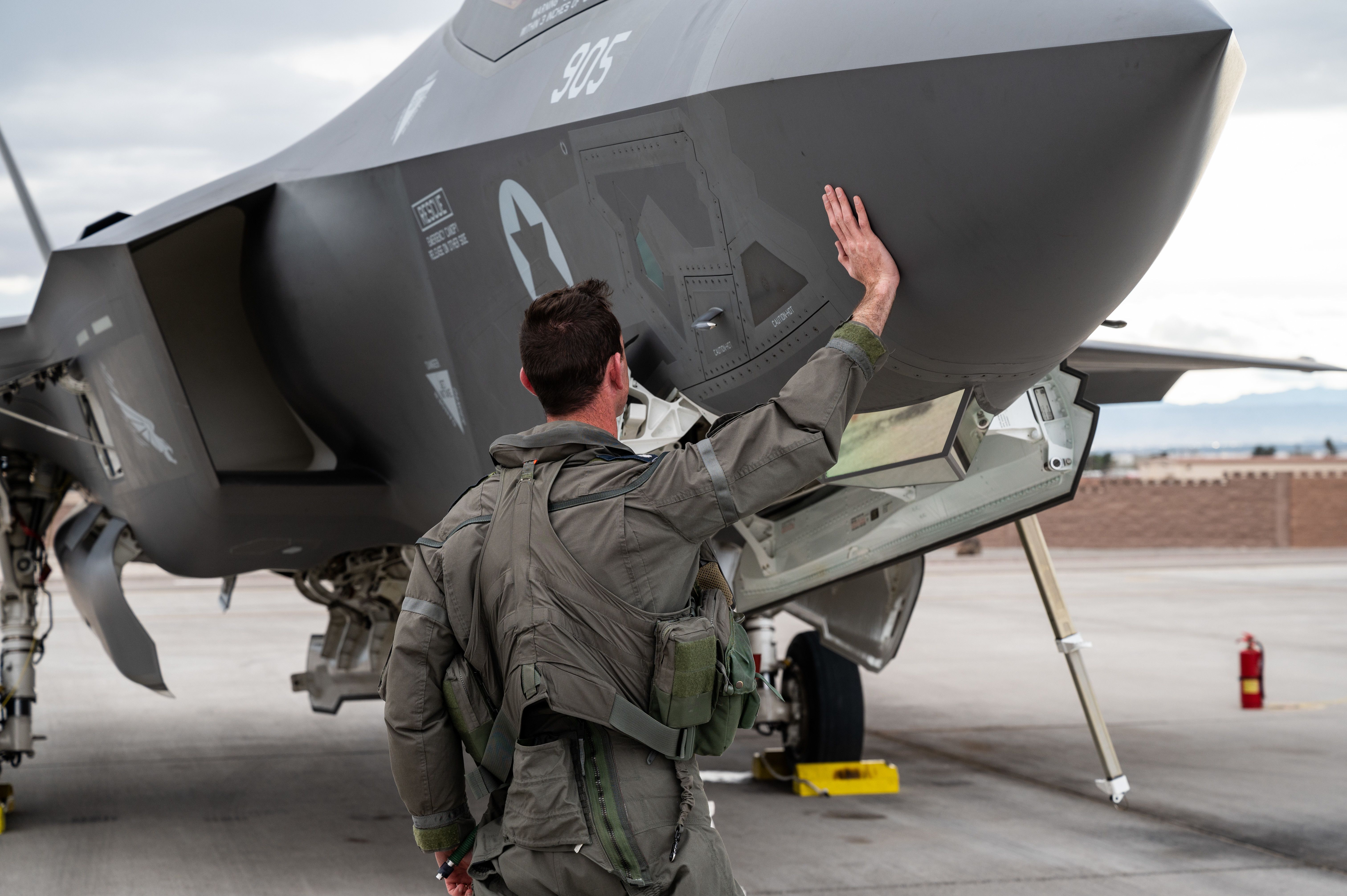
The tail fins and control surfaces are carefully shaped for maximum low-observable capability. These modifications allow the Adir to interface seamlessly with Israel’s existing fleet of F-15s and F-16s, creating a networked battlefield ecosystem .
The IAF declared the Adir operational in December 2017, basing it at Nevatim Airbase in the Negev Desert, a strategic location chosen for its hardened shelters and proximity to potential threat axes.
The jet’s combat debut came in May 2018, when Israel became the first nation to use the F-35 in combat, striking Iranian targets in Syria. This underscored the Adir’s role in Israel’s deterrence doctrine, which prioritizes preemptive strikes and deep-penetration missions against adversaries like Iran, leveraging stealth to evade advanced air defenses such as Russia’s S-300.
Today, the Adir is a linchpin of the IAF’s strategy, blending cutting-edge U.S. stealth with Israeli ingenuity to dominate the skies, proving that even in an era of mass-produced fifth-gen fighters, local adaptation is the ultimate force multiplier.
The F-35I In Action: Operation Rising Lion
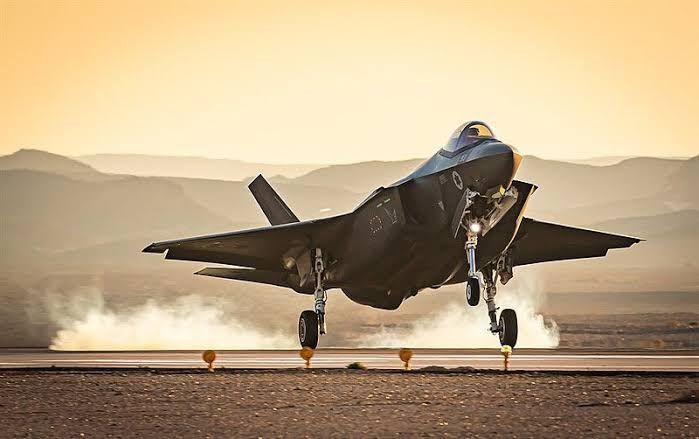
In the early hours of June 13, 2025, Israel launched Operation Rising Lion, the largest military strike on Iran since the Iran-Iraq War, with the F-35I "Adir" at the forefront of this audacious campaign. The operation marked a watershed moment in modern warfare, demonstrating the lethal synergy of stealth, precision, and strategic deception.
The IAF’s F-35I Adir... was hailed as the hero of the audacious Israeli operation - The EurasianTimes
Over 200 Israeli aircraft, including a significant contingent of F-35Is, penetrated deep into Iranian airspace, striking more than 100 targets, ranging from nuclear facilities like Natanz and Fordow to critical radar installations and IRGC command centers.
The F-35I’s stealth capabilities were pivotal in evading Iran’s S-300 and Bavar-373 air defense systems, which had been partially blinded by pre-positioned drone swarms and electronic warfare.
Flying in full stealth configuration—without radar reflectors or external weapons—the Adirs exploited their low radar cross-section (comparable to a golf ball) to slip past detection, delivering bunker-busting munitions and standoff missiles with surgical precision. Key targets included the Natanz uranium enrichment complex, where satellite imagery confirmed severe structural damage, and the Kermanshah missile base, a hub for IRGC ballistic operations.
Beyond infrastructure, the F-35Is enabled decapitation strikes that eliminated top IRGC leaders like Hossein Salami and nuclear scientists such as Fereydoon Abbasi. The jets also conducted Suppression of Enemy Air Defenses (SEAD) missions, crippling radar sites in Hamadan and Tabriz to create safe corridors for follow-on strikes by F-15Is and F-16Is.
The operation’s success hinged on Israel’s secret modifications to the F-35I, including conformal fuel tanks for extended range (enabling over 130 miles or 1,500 km missions without refueling) and AI-driven mission-data updates for real-time adaptability.
Despite Iranian claims of downing two F-35s (vigorously denied by Israel), the Adir’s performance validated its role as the linchpin of 21st-century aerial dominance, reshaping the calculus of power in the Middle East.
The F-35I "Adir" Technological Overview
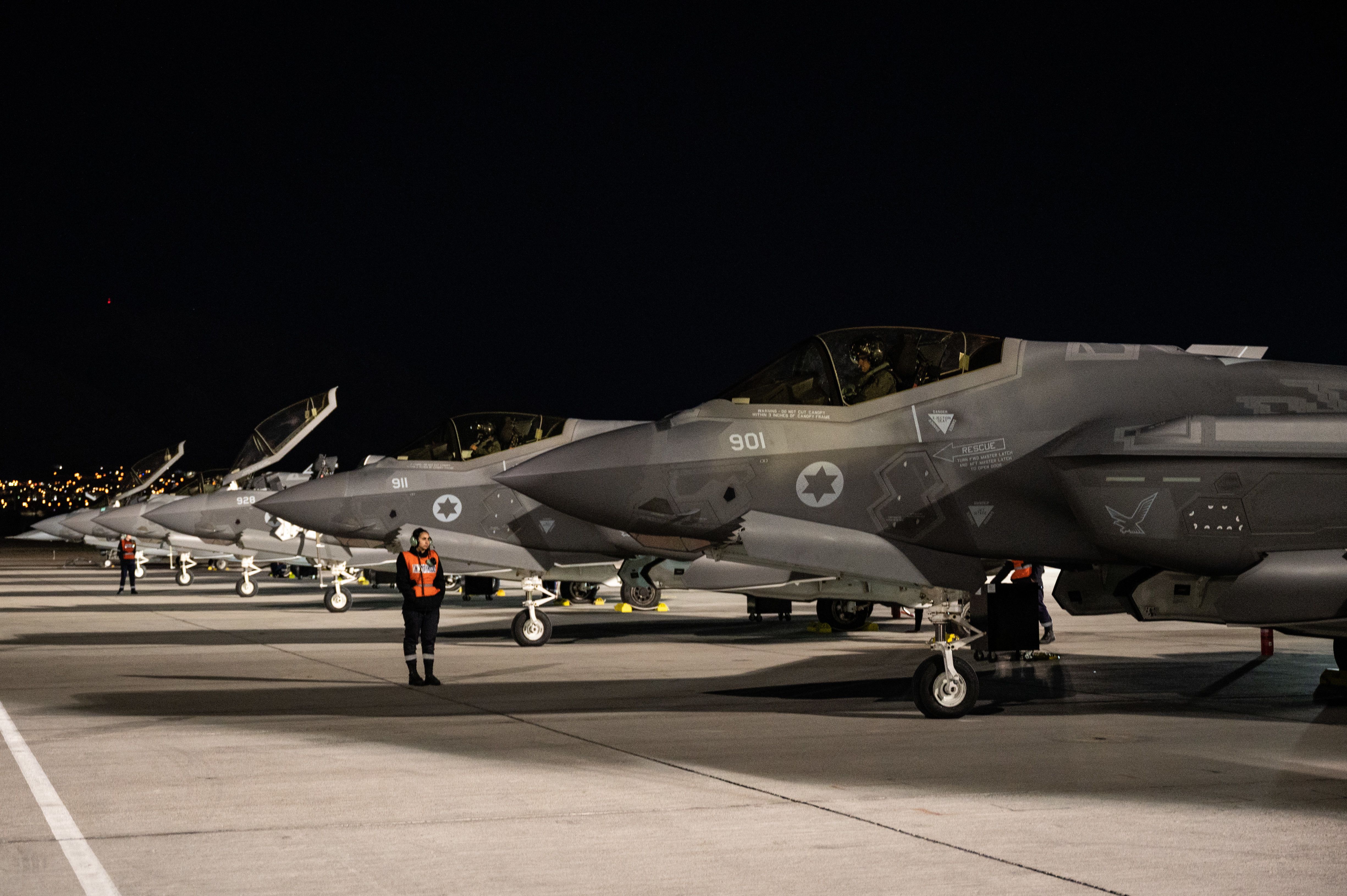
At the heart of the F-35I's dominance lies its revolutionary stealth design, enhanced by Israel's proprietary modifications that push the boundaries of fifth-generation warfare.
Unlike its standard counterparts, the Adir incorporates indigenous radar-absorbent materials and specialized coatings optimized for Middle Eastern conditions, reducing its radar signature to near-invisible levels against regional threats. Its electronic warfare suite, developed by Elbit Systems, integrates advanced jamming pods and frequency-agile countermeasures capable of spoofing even Russia's most sophisticated S-400 systems.
The Adir's true genius emerges in its mission systems architecture, where Israeli engineers have unlocked unprecedented flexibility.
A modular avionics bay allows seamless integration of locally developed weapons like the Rampage standoff missile and SPICE-2000 guided bombs, while maintaining compatibility with the full spectrum of U.S. munitions. This dual-capability payload system enables the jet to shift roles mid-mission (from deep penetration strikes to close air support) without returning to base.
What truly sets the Adir apart is its battlefield cognition. The jet's fusion of U.S. AN/APG-81 AESA radar with Israel's IAI/ELTA EW systems creates a real-time combat cloud, sharing targeting data across platforms through the IAF's "Ofek" network.
Pilots experience a quantum leap in situational awareness, with AI-processed threat prioritization projecting enemy movements and suggesting optimal attack vectors. This system proved decisive during Operation Rising Lion, where Adirs coordinated simultaneous strikes across seven Iranian provinces while evading 94% of ground-based defenses.
The Adir embodies Israel's strategic philosophy: adaptation as a force multiplier. By transforming an already formidable platform into a regionally optimized weapon system, the IAF has created a thinking, evolving combat entity that redefines air superiority in the 21st century.
Redefining Airpower And Deterrence In The Middle East
Delivering decisive blows in Operation Rising Lion and boasting a proven combat legacy, the F-35I has emerged as the linchpin of Israel’s military strategy.
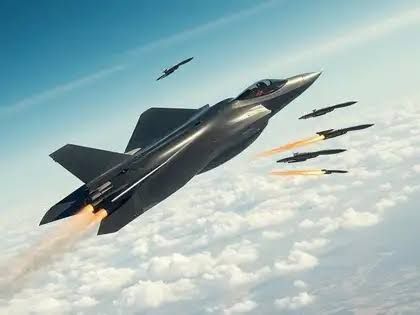
In this campaign, the Adir spearheaded deep-strike missions against Iran’s nuclear facilities, penetrating layered air defenses (S-300, Bavar-373) with near-total impunity. Satellite imagery confirmed catastrophic damage to uranium enrichment halls and centrifuge arrays, while precision strikes eliminated six top Iranian nuclear scientists and decapitated IRGC leadership.
These operations validated Israel’s "campaign between wars" doctrine, systematically degrading threats below the threshold of full-scale conflict.
The Adir’s impact extends beyond Iran.
In Syria (2018–2024), it conducted the world’s first F-35 combat missions, striking Iranian proxy bases and Russian-supplied S-300 batteries without losses.
Over Lebanon (2024), F-35Is executed preemptive SEAD missions against Hezbollah rocket sites, leveraging stealth to loiter undetected and guide follow-on strikes by F-15Is. These operations showcased a revolutionary force-multiplication effect: Adirs act as airborne sensor nodes, feeding real-time data to fourth-gen fighters and ground defenses like Iron Dome, creating an integrated kill web.
Strategically, the F-35I has reshaped regional power dynamics. By proving it can strike anywhere (from Yemen (over a thousand miles or 1,700 km) to central Iran) it has eroded adversaries’ faith in hardened defenses and forced costly reinvestments in counter-stealth systems.
The jet’s deterrent value is unparalleled: Iran’s nuclear calculus now factors in the Adir’s ability to deliver "left-of-launch" disruption, as seen in the systematic targeting of scientists and command hubs.
Beyond the Middle East, the Adir’s success has global ripple effects. North Korea reportedly accelerated its own underground facility dispersion after observing Israel’s strikes.
With zero combat losses across 15,000+ flight hours, the F-35I has cemented Israel’s technological supremacy while offering a blueprint for allied air forces: stealth, when fused with autonomy and local adaptation, is the ultimate strategic equalizer.
The F-35I’s Achilles’ Heels And Ethical Quandaries
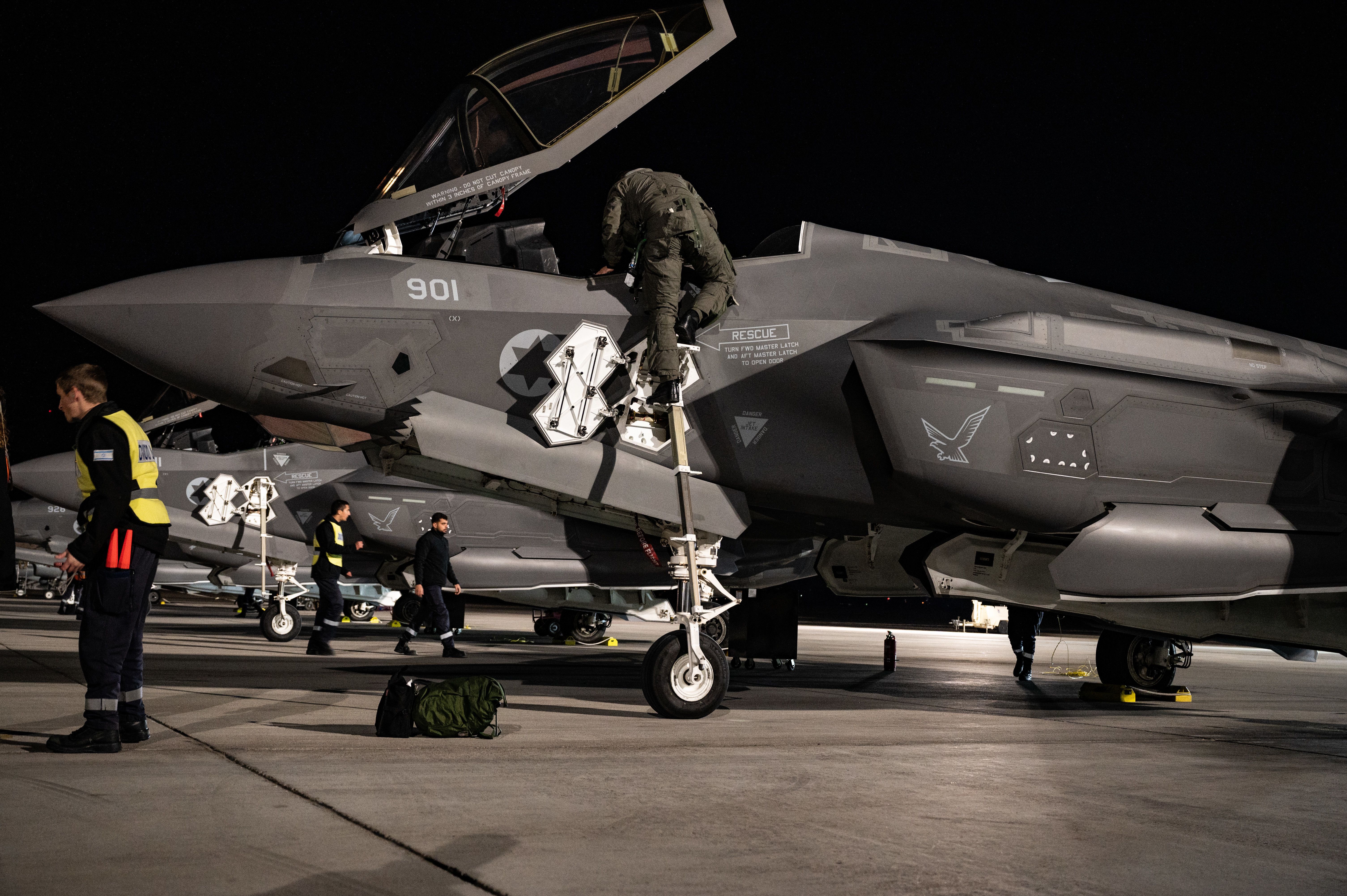
Despite its battlefield triumphs, the F-35I "Adir" faces significant constraints that temper its near-mythical reputation. With an estimated $44,000 per flight hour (nearly triple the cost of Israel’s F-16Is), the jet strains defense budgets, forcing painful trade-offs in fleet size and pilot training hours.
Maintenance remains a persistent challenge; the Adir’s stealth coatings degrade rapidly in desert conditions, requiring meticulous reapplication after every 4–5 sorties, while its ALIS logistics system has struggled with predictive maintenance accuracy, grounding jets for false-positive alerts.
Operationally, the Adir’s vulnerabilities might have surfaced during Operation Rising Lion when Iranian electronic warfare units reportedly disrupted datalinks to supporting drones, forcing manual targeting—a rare lapse in its sensor fusion dominance.
While its 1,200 km combat radius suffices for regional strikes, deep-penetration missions into Iran still require risky midair refueling, exposing tankers to counterstrikes.
The jet’s limited payload in stealth mode (only four internal weapons) forced difficult choices during multi-target operations, with some strikes delayed until external hardpoints could be safely used after SEAD suppression.
The F-35I’s very effectiveness has sparked global backlash. Human rights groups condemn its role in "signature strikes"—AI-assisted attacks on vague behavioral patterns—after a 2024 incident where an Adir obliterated a suspected IRGC safehouse, later revealed to contain civilians.
Moscow and Beijing now cite Israel’s campaigns to justify their own anti-stealth arms races, with Russia fast-tracking S-500 deployments to Syria.
Perhaps most damningly, the Adir’s success has paradoxically lowered the threshold for conflict. By making precision strikes seem risk-free, it emboldens preemptive actions that could spiral beyond control. The ultimate limitation of this technological marvel may be its inability to solve the oldest equation of war: how to wield perfect power without creating perfect chaos.
The F-35I Adir’s Ripple Effect On Warfare And Deterrence

Israel’s combat-proven F-35I "Adir" has rewritten the playbook for fifth-generation warfare. It has forced global militaries to reassess their doctrines.
The U.S. and NATO allies are closely studying Israel’s network-centric integration of stealth fighters with fourth-gen aircraft and missile defenses, a model now informing Pacific contingency plans against China.
The Adir’s success in penetrating Iran’s S-300 systems has validated stealth as a strategic equalizer, accelerating demand for F-35s among allies like Japan and South Korea while pressuring holdouts like Canada to expedite deliveries .
For Iran, the Adir’s strikes exposed catastrophic gaps in its air defenses, possibly triggering urgent investments in Russian S-500 systems and indigenous radar-jamming technologies. Yet Tehran’s reliance on proxy warfare faces obsolescence. The F-35I’s ability to strike deep without attribution undermines the "forward defense" strategy that prioritized militia-building over national airpower.
The conflict also highlights a broader paradigm shift: terrain no longer guarantees security against precision stealth. As Israel’s "campaign between wars" demonstrates, tech supremacy now dictates regional dominance, with the Adir serving as both shield and scalpel—a tool for coercion or crippling preemption.
This new era of shadow wars favors those who master invisibility, leaving adversaries scrambling to adapt or face irrelevance.